Power your drone
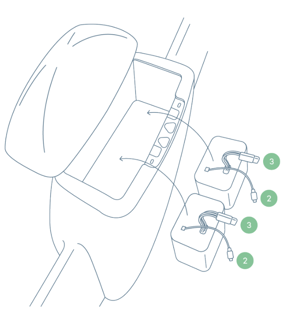
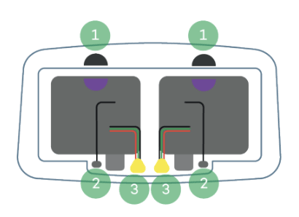
- Put the batteries in the battery compartment; use the battery pair that has the same color-coded half circles—the half circles on the batteries and on the drone should match
- Plug in the two smart battery cables
- Plug in the two smart power cables
Unplug the flight batteries after the flight to power off the drone. If the drone is left powered during transport, the flaps are at risk to get damaged.
Assemble your ground station
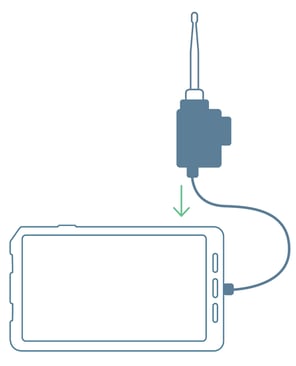
Ground stations are not interchangeable between drones. Make sure that the drone ID matches the ID of the ground station.
The telemetry connection between drone and tablet operates on 2.4016 to 2.4776 GHz (EIRP: 19,8 dBm)."
Optionally, you can operate the WingtraOne with a secondary RC link that operates on 2.405 to 2.474 GHz (EIRP: 19,5 dBm)."
Learn more about the RC at knowledge.wingtra.com/manual-flying.
Measure the wind speed
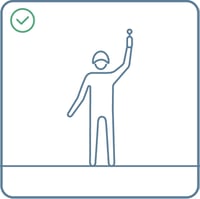
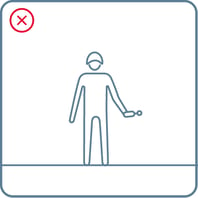
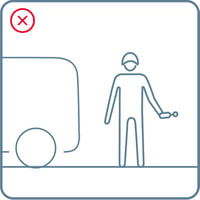
Use the wind measurement tool to measure the wind speed.
Don't measure the wind speed while standing behind big objects, e.g., buildings or trees. Raise the tool above your head to get the most accurate results.
Drone tipping expectations
In calm conditions, WingtraOne lands smoothly on its tail. In windy conditions, the aircraft can tip over upon landing. Generally this is not a problem and damages rarely occur.
| Measured on ground* | Surface wind** | Tipping expectations |
| 0-5 m/s (0-11 mph) | 0-7 m/s (0-16 mph) | Tippings rarely occur |
| 5-8 m/s (11-18 mph) | 7-10 m/s (16-22 mph) | Tippings can occur |
| >8 m/s (>18 mph) | >10 m/s (>22 mph) | Not recommended to fly |
* As measured with the wind measurement tool from the pilot box—approx 2 m (7 ft) above the ground
** As referenced in most weather forecasts—approx 10-20 m (33-66 ft) above the ground
Avoid obstacles
Be aware that the obstacle clearance zone should correspond to the wind conditions. The stronger the wind, the farther from obstacles the drone should be.
Distance to objects in different wind conditions:
< 5 m/s (< 11 mph) continuous wind speed
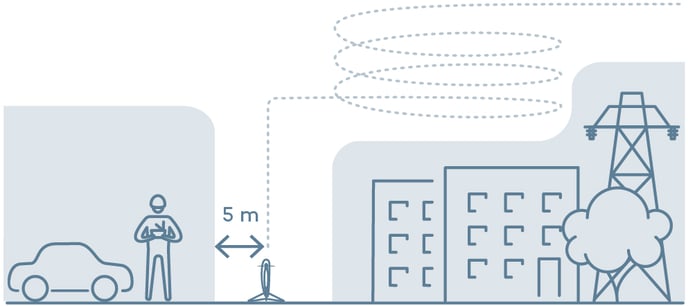
> 5 m/s (> 11 mph) continuous wind speed
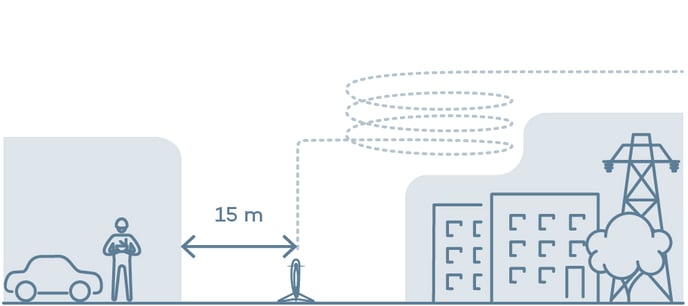

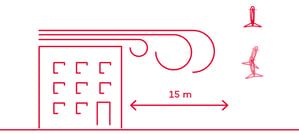
Generally, it is recommended to fly in open, obstacle-free areas.
When not keeping the recommended distance from objects, you risk crashing the drone because of drift or turbulence.
Turbulence occurs close to tall buildings, cliffs, mountains and valleys.
Take-off position in wind
When placing the drone for take-off, make sure that it is positioned parallel to the wind direction.
Parallel to wind
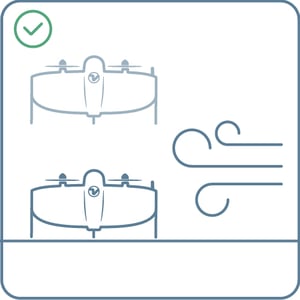
Perpendicular to wind
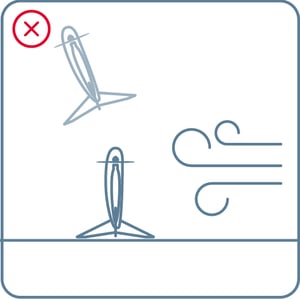
Prepare for take-off
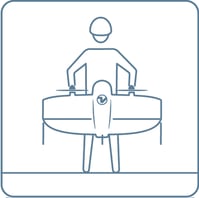

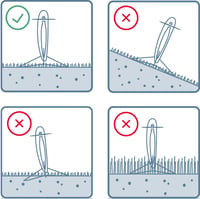
- Firmly insert the middle stand until you hear a click and, holding the motors, place the drone on the take-off point
- Make sure the take-off point is a safe distance from people and obstacles
- Place it on even ground, making sure it doesn't sink into mud and that the grass surrounding it is not too high
Go through checklist and take off
- Select the checklist
- Follow the instructions
- Once all the checklist items are green, press the button to take off
>>> Next step: 6. During the flight
<<< Previous step: 4. Field set-up